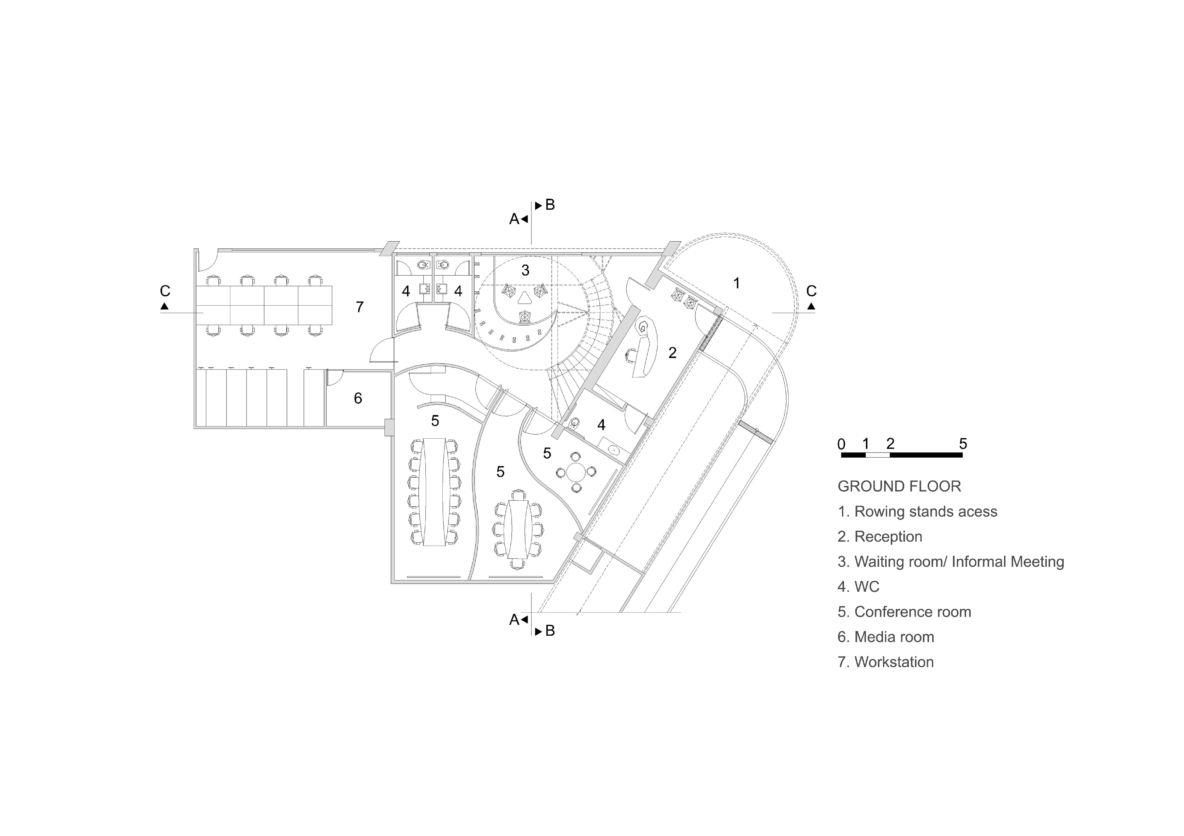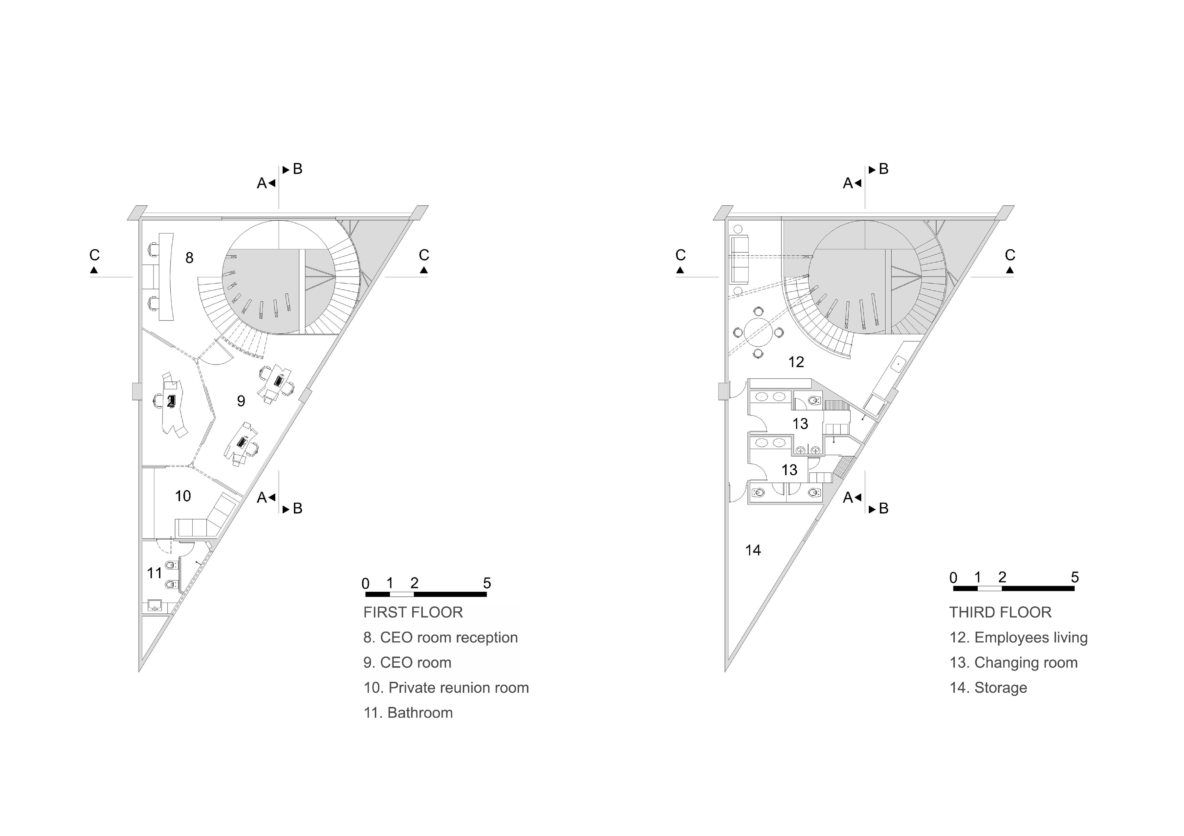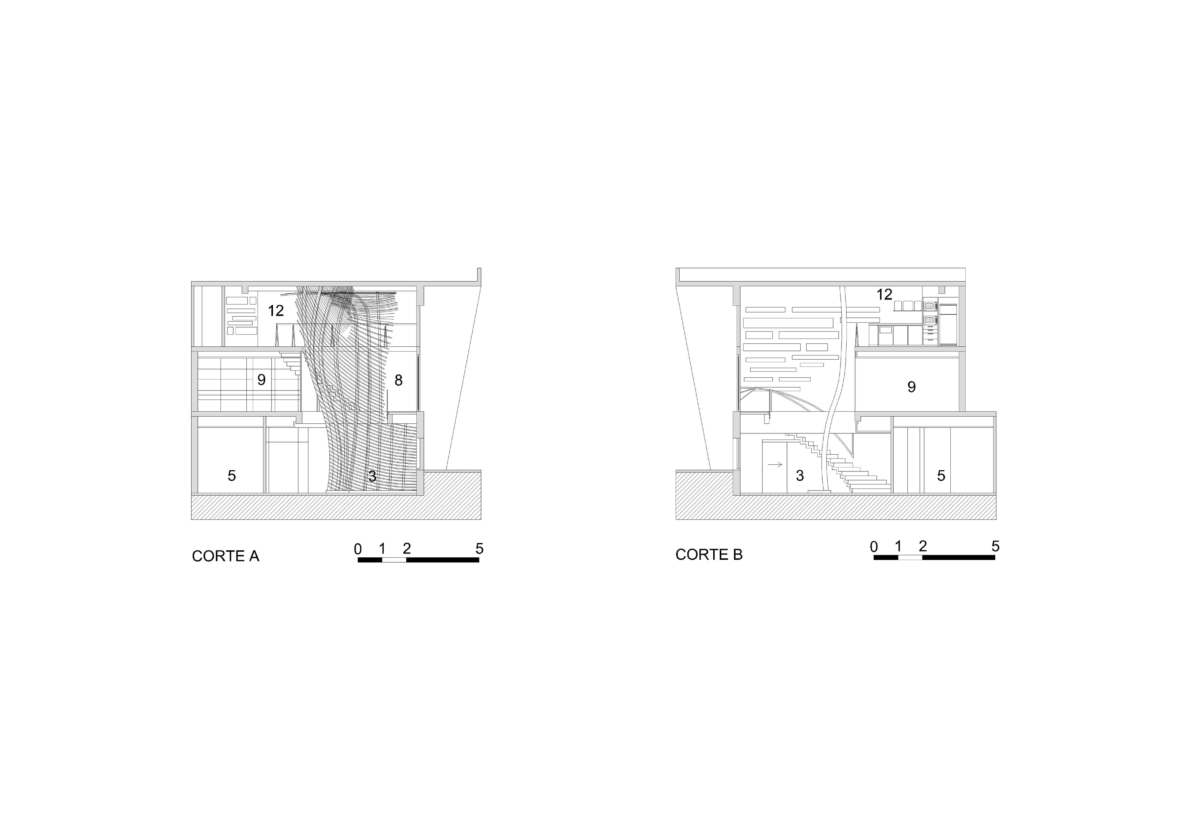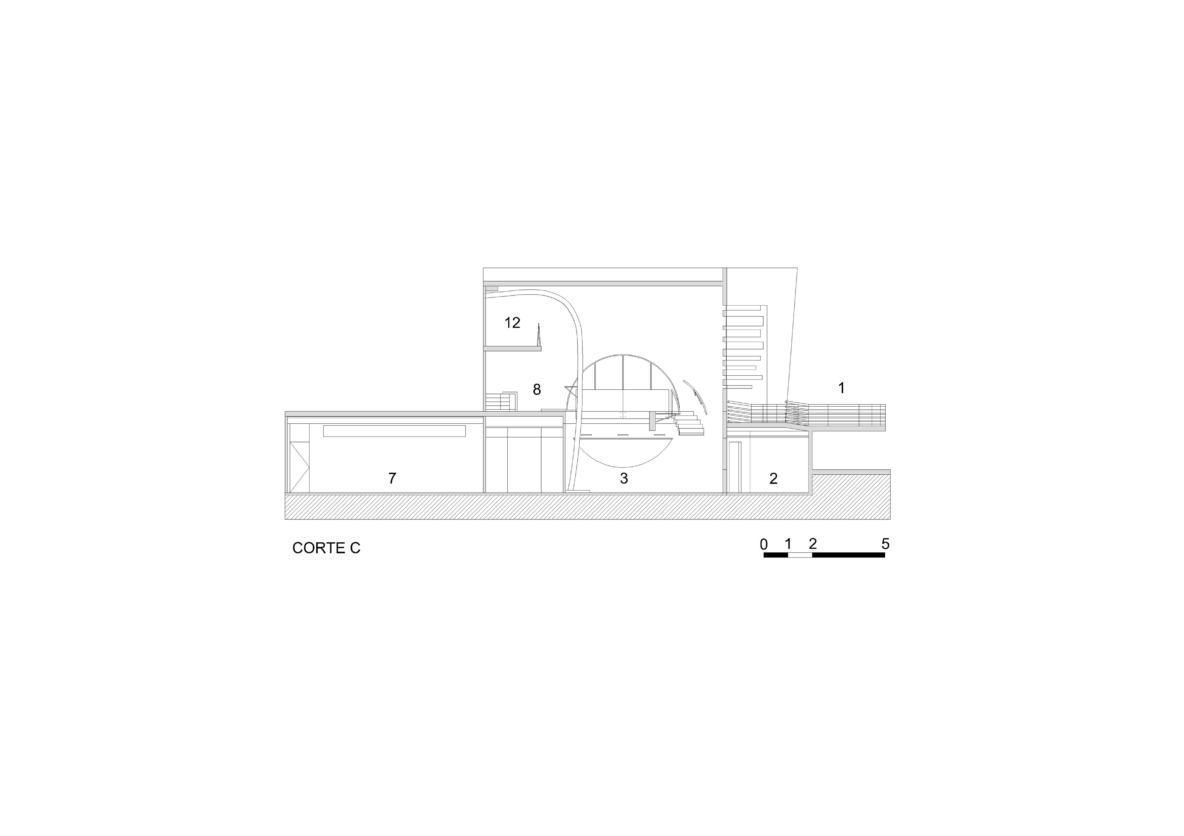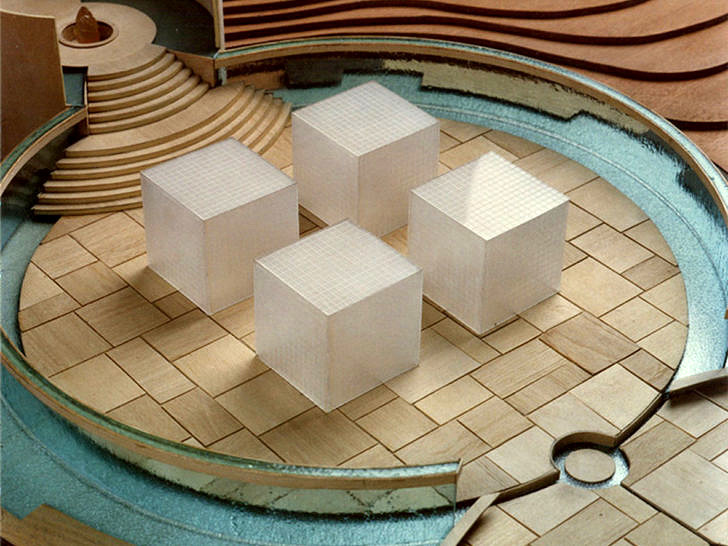Year:
2009
Surface:
350m²
Location:
Rio de Janeiro
In the heart of Rio...
The design of Glem offices in Rio de Janeiro, Brazil, is defined by it’s odd location, under a triangular end of a concrete stand for rowing competitions.
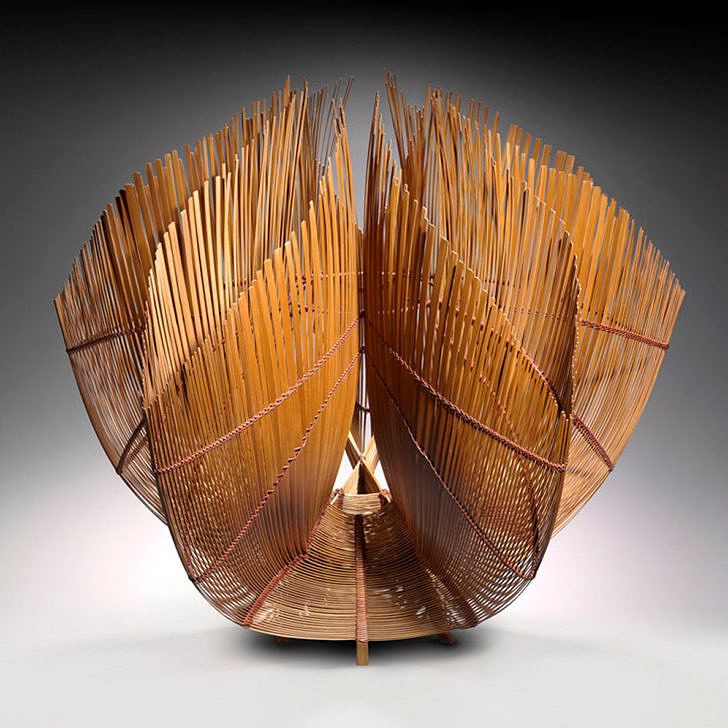
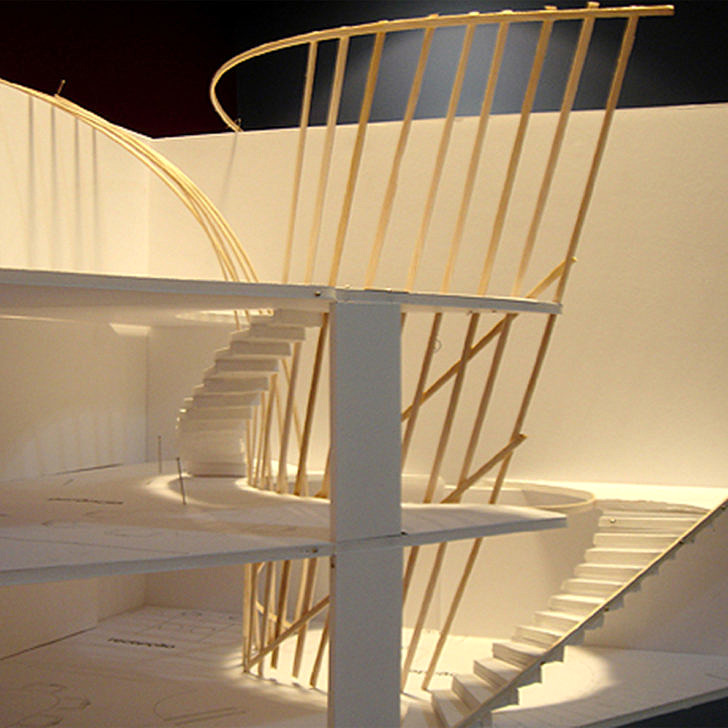
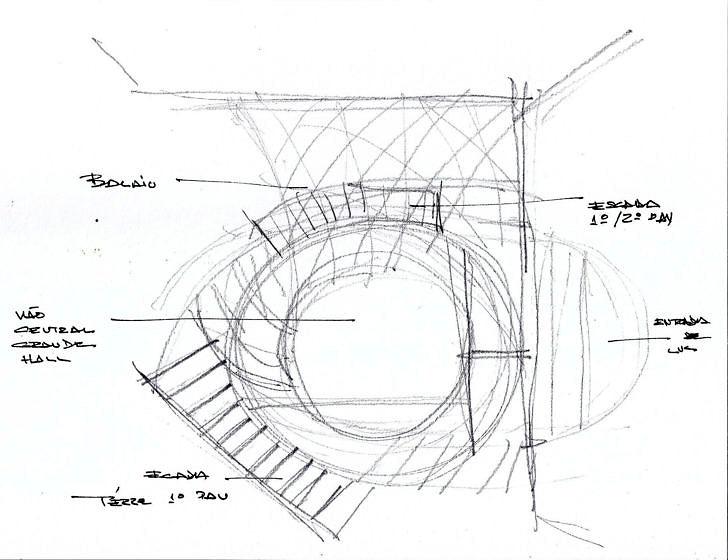
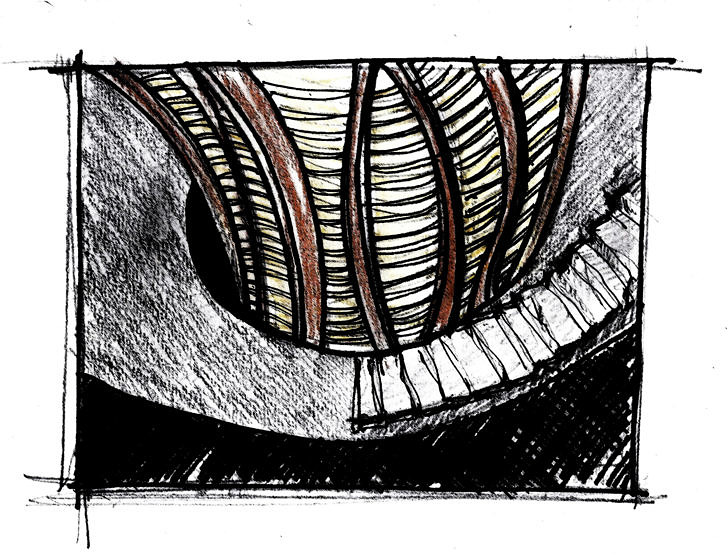

Inside the building and its challenging
The design of Glem offices in Rio de Janeiro, Brazil, is defined by it’s odd location, under a triangular end of a concrete stand for rowing competitions.
One is almost entirely occupied by a pedestrian ramp to access the stands, which are public and so, seen by the client as a threat to a possible trespassing. For that reason, this façade has some long and narrow openings closed with clear transparent glass, to invite inside only light and external views.
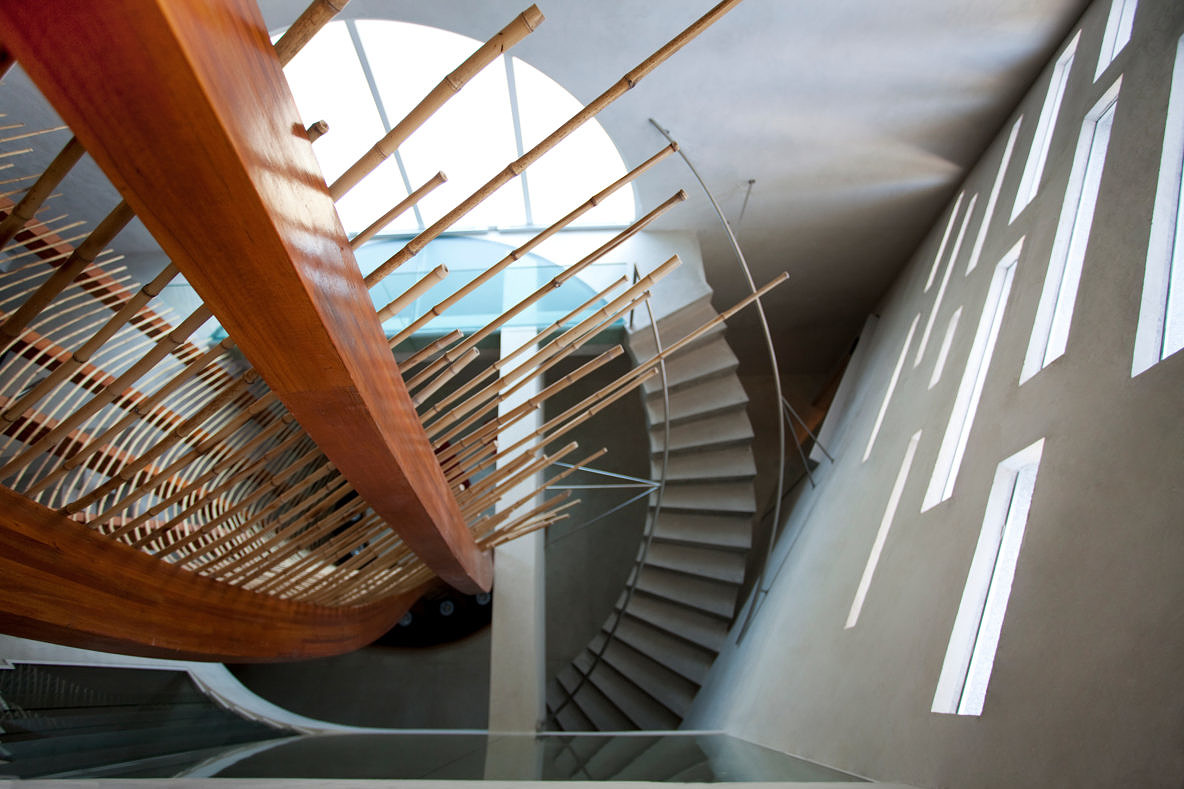

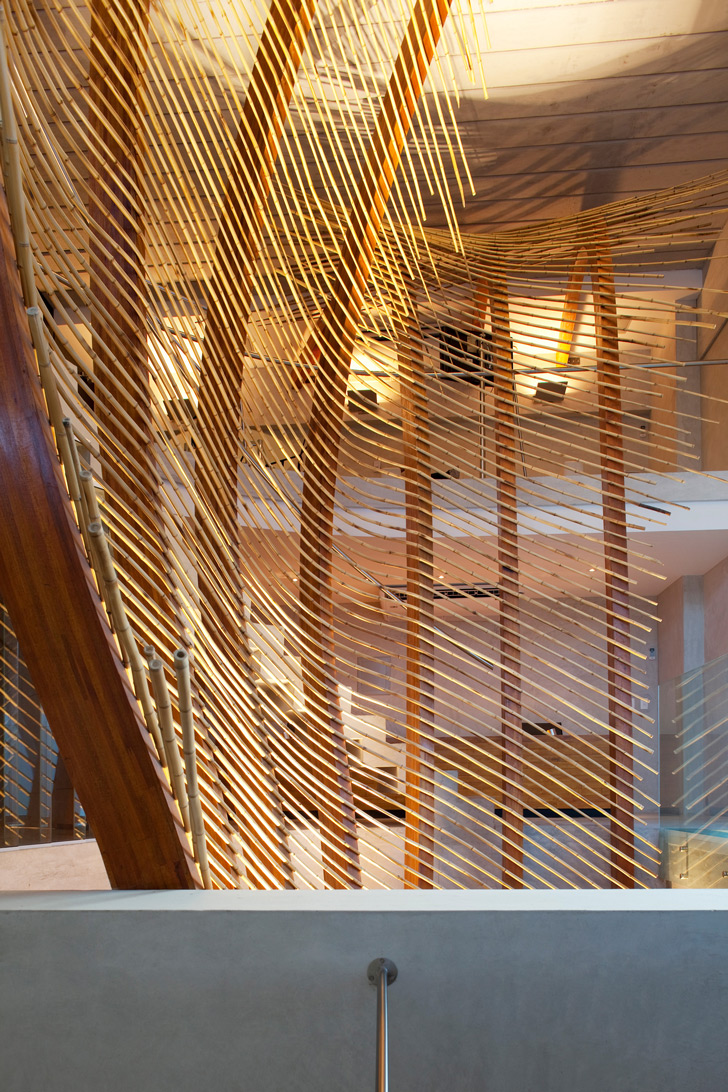
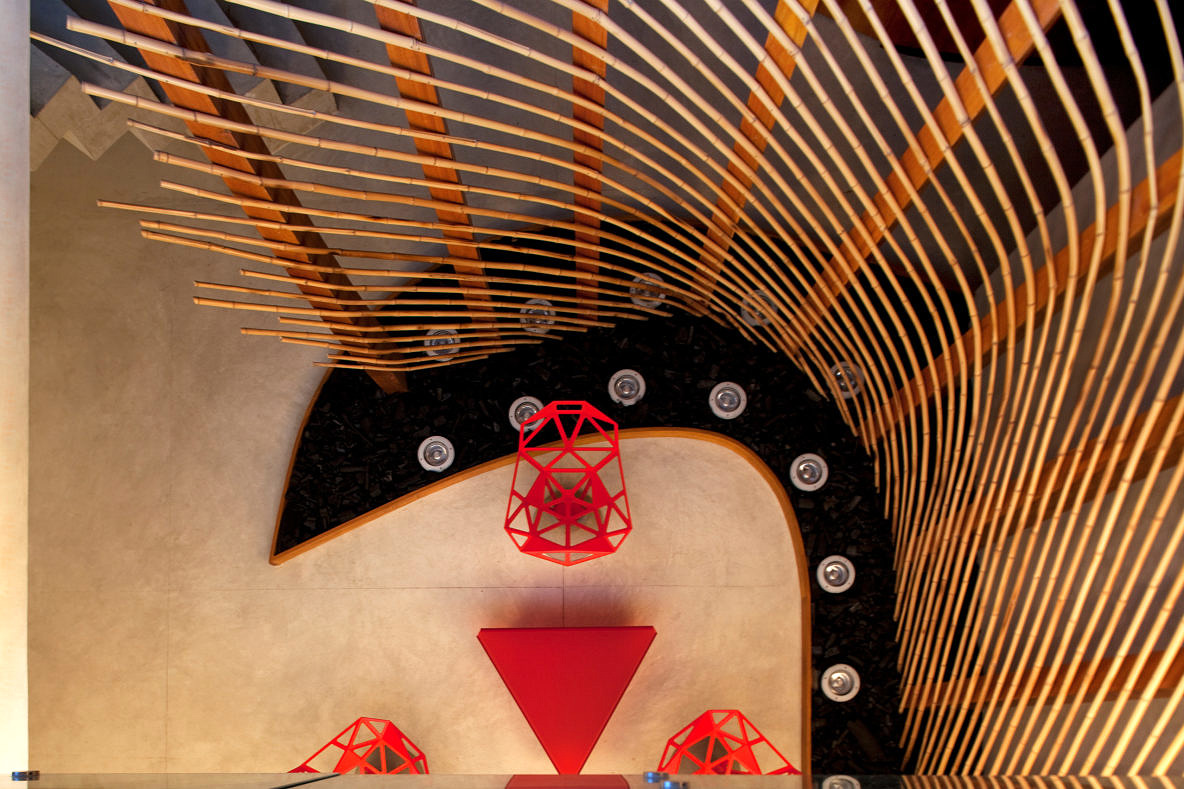
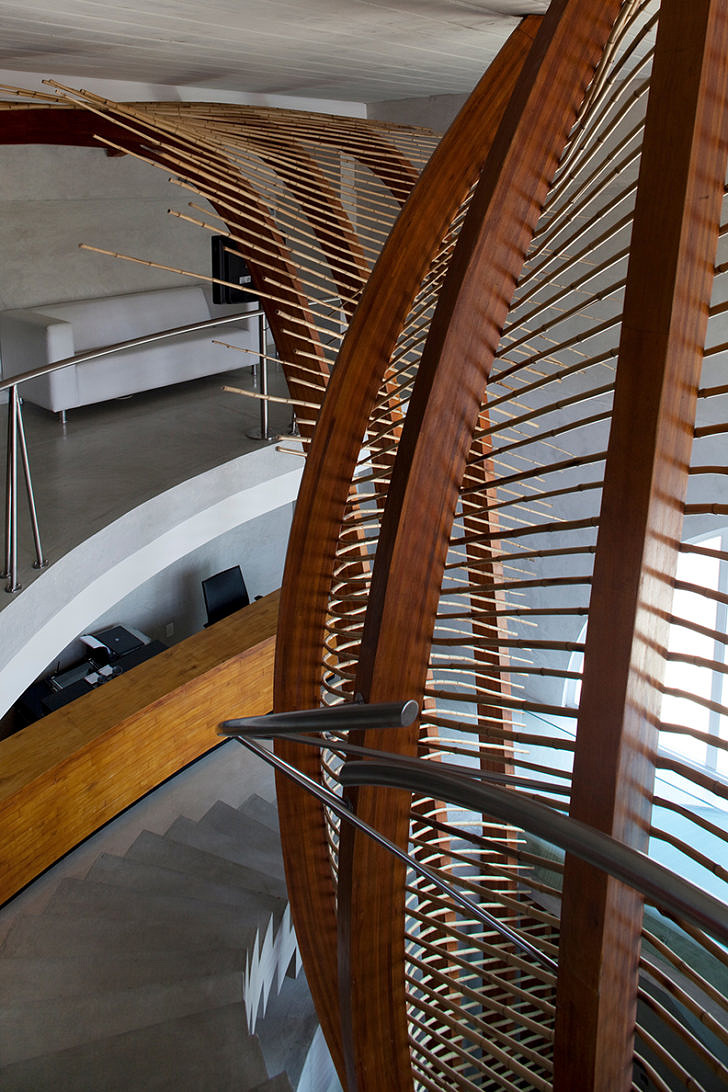

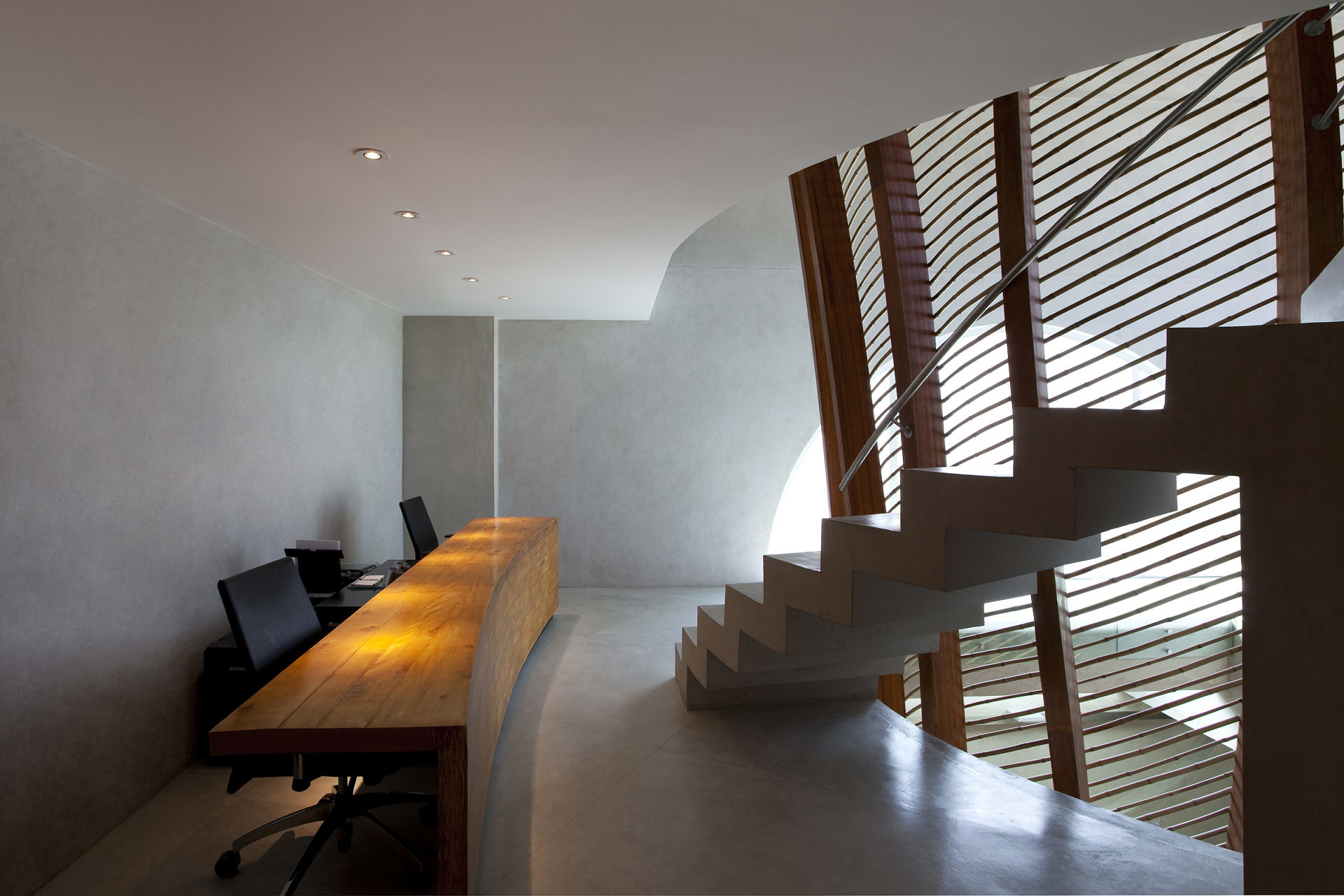
The second façade overlooks a group of confused existing buildings, a fact that led us to design a semi-circle glazing with translucent bullet-proof glass. After dealing with all that limitations, we decided to bring together all the separate parts of the project via a vertical circulation space defined by curved concrete stairs, eucalyptus laminated beams and a bamboo mesh.
An empty “basket” that welcome visitors and animate the office with a delicately enclosed void. On the first level, the basket-defined space offers a small waiting area used as well for informal meetings, and distribute access to three sinuous meeting rooms, two bathrooms, a working area and a technical room.
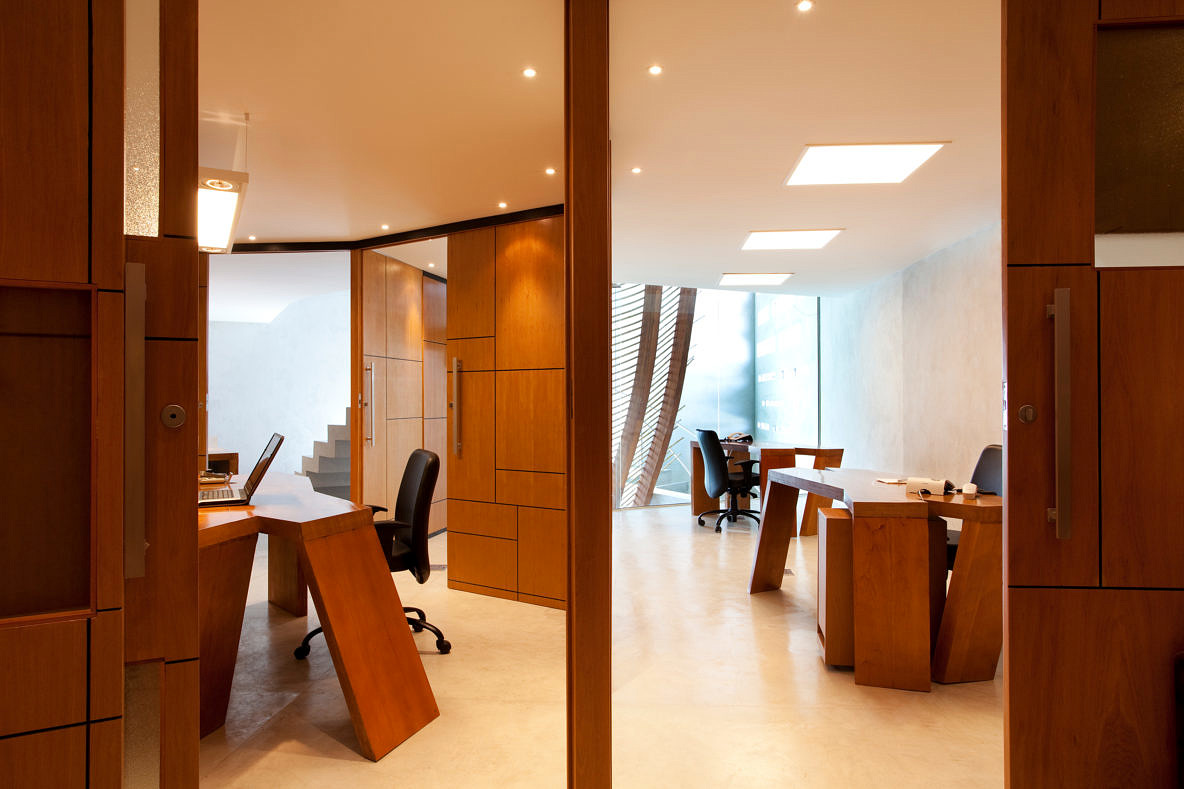
The first staircase takes to a catwalk that mirrors, in laminated translucent glass, the semi-circle geometry of one of the façades glazing. This catwalk takes to the second floor that contains wood sliding doors that can partially connect or totally separate the spaces of the office’s directors’ rooms. The second staircase takes to the relaxing level of the office, with a small kitchen, a table for eating and a sofa for resting.
There are also two changing rooms here. Details such as the on-site handcrafted bamboo mesh, the translucent catwalk glass, stainless steel handrails that seem to float over the stairs for not being attached to it, and the generous light filtered mainly trough the semi-circle glazing, gives lightness and delicacy to the design.

Photographer: Leonardo Finotti
